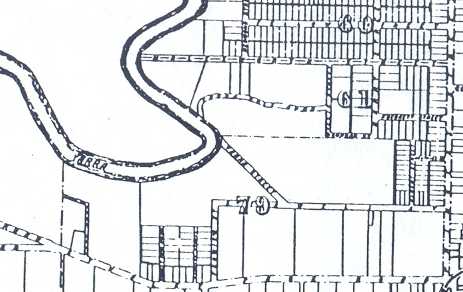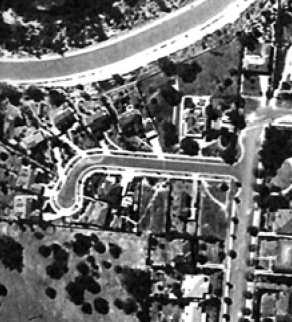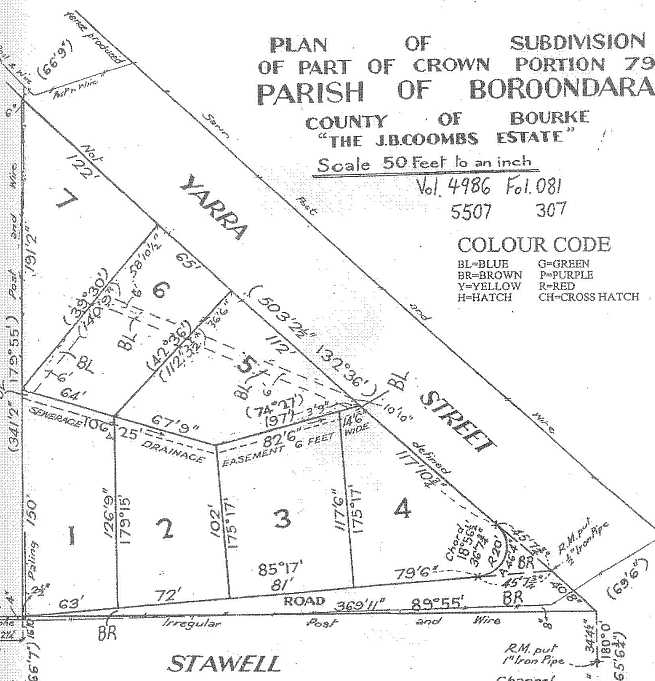 |
Studley Park Modern |
Up to 1890s Crash
| |
| To World War II | |
| Post War Development | |
| Development today |
|
The Coombs familyCoombs Avenue, initially named Studley Park Avenue, was named after Joseph Butterworth Coombs (1842 to 1901), an accountant who founded a successful mercantile trading company in his name (Coombs and Co Ltd) and who once owned property in the vicinity. At the time of his marriage, Coombs had already purchased 10 acres of Studley Park in 1863 from Dr Thomas Black, who grazed sheep on the land. The acreage was the north-western portion of lot 79, earlier conveyed to Dr Black by Fairfax, Fenwick and Bell, the original purchasers of the 113 acre lot in the Land Sales of 1851.
The acreage included land on the west of Fenwick Street that extended along lower Stawell Street to the corner of Yarra Street, all of it connected directly to the Yarra environs. A right of way to Studley Park Road was on the title, though Coombs went on to purchase more land, some of which faced Studley Park Rd itself. An idea of Coombs' holding can be gleaned in a segment of the map of the subdivision in 1888.
Evidence from newspapers points to the Coombs being in occupancy at Studley Park about 19 months after their marriage, while J B's trading company, based in Queen Street Melbourne, continued to prosper. The enterprising J.B. Coombs instigated his own Victoria Trade Protection Association, listing liens on wool and livestock mortgages, one of the earliest records in Australia's history of copyright registration. In addition to owning the Studley park acreage, J B Coombs later went on to acquire 1201 acres of land abutting the Acheron River (after which the property was named). The property was near Taggerty, purchased for the purposes of dairy farming and cattle sales. (Taggerty is now part of Murrindindi Shire). While retaining the Kew property (presumably managing or leasing it when not in residence), he became a Taggerty Councillor and was Shire President for a time. He also built the Taggerty Butter Factory -- what better testimony for the name (Coombs' middle name) Butterworth! The factory opened in 1892, and caused great excitement at the time. It was mooted that not a single resident within half a dozen miles of the factory was absent, an impressive line-up photographed at the opening proceedings. J B Coombs died at Acheron Station in 1901 (aged 59 years). A few months after, tenders were called to repair the Kew dwelling, the Fenwick Street property now appearing in records with the name Hope Mansell. Caroline Coombs may have named the house after an English village and parish of the same name in Ross district, Herefordshire, England (a Reverend Benjamin Coombs, likely Joseph's father, left Ross at the beginning of his Baptist pastoral office in 1821). She remained at Hope Mansell until she died in 1924, survived by three sons and five daughters (one son having died seven years before his mother). Not long after her death, advertisements appeared for the sale of the Studley Park land, including two vacant lots on the west side of Fenwick Street that stretched back to Hume Street (then called Studley Street). The ads highlighted the attractive views, proximity to Studley Park Road, and 12 minutes walking distance to the Kew Railway Station (no mention of the hill!). The sale seems to have been a mechanism for distribution of the Estate, as the following year the original 10 acre holding was transferred to members of the Coombs family. Two sisters, Hilda and Kathleen (who had never married and were documented as being residents at Hope Mansell), together with their brother Horace, became the proprietors of the large holding conjoined to the river parklands. It is interesting that the Coombs eldest daughter Mabel married William Younger who, with his brother Alexander, developed Younger and Mackie Courts, both south of Studley Park Road. Mabel and William Younger once lived at 74 Studley Park Rd on the corner of Coombs Avenue, the house named Coombe! The Boulevard was not yet in existence in Studley Park. At the eleventh hour in 1933, Horace (then resident at another Fenwick Street property) and the Misses Coombs of Hope Mansell, objected to the intrusion of the road into the park, but their efforts could not stop the way of progress. Part of the land in Stawell Street was subdivided in the late 1920s -1930s, evident from some of the lovely older houses in the street. Another portion of the land, with frontage in Fenwick Street, became Milfay Avenue, making way for the creation of the New Boulevard Estate in 1940 (reducing the southern portion of the lot on which Hope Mansell stood).
The final portion of the land was subdivided in 1948, heralding the houses of the 1950s in Stawell and Yarra Streets. With the Boulevard improving access, the time was now right for the pioneering home builders and an inventive new wave of architects to take on the slopes!
J B Coombs' daughter, Miss Hilda Coombs, remained at the house until her death in 1954 (it is uncertain whether her sister Kathleen was a resident at the time). The house was eventually demolished some time before 1960, assuming it was the same "ancient stone and slated" dwelling described on p.24 of the City of Kew Centenary (1860-1960) publication.
|


